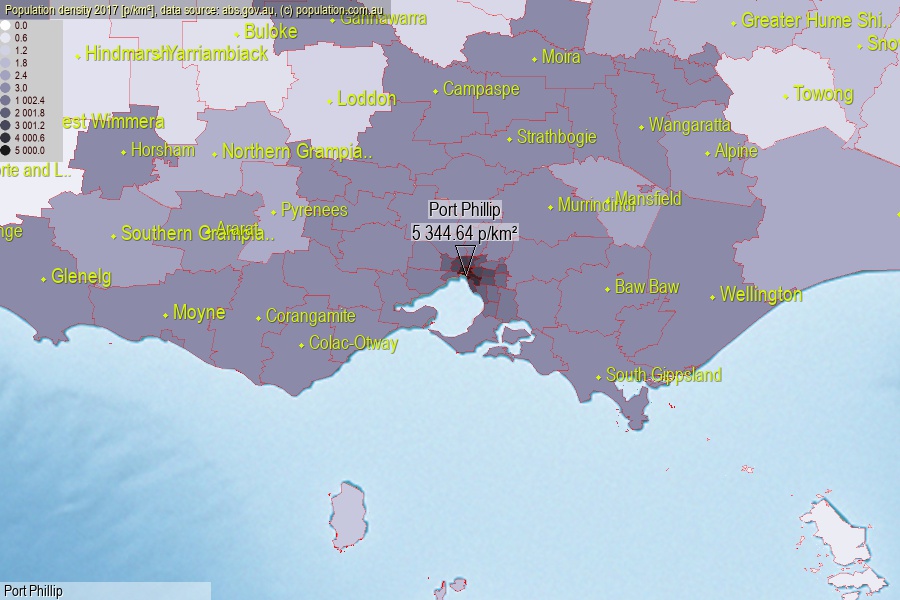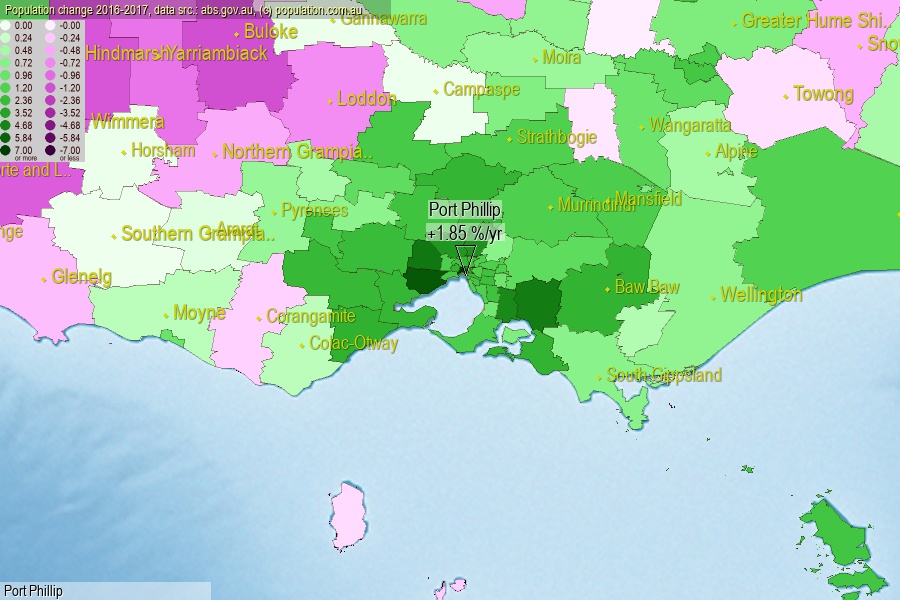 population.com.au
population.com.auLast official estimated population of Port Phillip City (as Local Government Area) was 110 634 people (on 2017-06-30)[2]. This was 0.45% of total Australian population and 1.721% of VIC population. Area of Port Phillip is 20.70 km², in this year population density was 5 344.64 p/km² . If population growth rate would be same as in period 2016-2017 (+1.85%/yr), Port Phillip population in 2025 would be 128 084. [0]



Click to enlarge. Port Phillip is located in the center of the images.
Population [people], population density [p./km²] and population change [%/year] [2]
[1996-2001] +1.02 %/Y
[2001-2002] +2.71 %/Y
[2002-2003] +2.37 %/Y
[2003-2004] +2.19 %/Y
[2004-2005] +2.11 %/Y
[2005-2006] +2.06 %/Y
[2006-2007] +2.06 %/Y
[2007-2008] +1.84 %/Y
[2008-2009] +2.25 %/Y
[2009-2010] +1.16 %/Y
[2010-2011] +0.93 %/Y
[2011-2012] +2.69 %/Y
[2012-2013] +2.27 %/Y
[2013-2014] +2.25 %/Y
[2014-2015] +1.85 %/Y
[2015-2016] +2.11 %/Y
[2016-2017] +1.85 %/Y
[0] Calculated with linear interpolation from officially estimated population
[1] Read more about LGA and Australian Statistical Geography Standard (ASGS) on abs.gov.au
[2] Population data from Australian Bureau of Statistics (Population and density: 2017; change: 2016-2017)
[3] Digital Boundaries: Australian Statistical Geography Standard (ASGS) 2016.